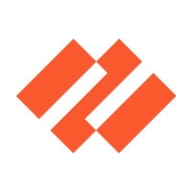


Find out what your peers are saying about Microsoft, Wiz, Amazon Web Services (AWS) and others in Cloud Workload Protection Platforms (CWPP).
| Product | Market Share (%) |
|---|---|
| Bridgecrew | 0.2% |
| Microsoft Defender for Cloud | 16.2% |
| AWS GuardDuty | 14.4% |
| Other | 69.2% |
| Product | Market Share (%) |
|---|---|
| Tenable Security Center | 9.1% |
| Qualys VMDR | 13.7% |
| Rapid7 InsightVM | 11.7% |
| Other | 65.5% |


| Company Size | Count |
|---|---|
| Small Business | 47 |
| Midsize Enterprise | 20 |
| Large Enterprise | 53 |
| Company Size | Count |
|---|---|
| Small Business | 22 |
| Midsize Enterprise | 10 |
| Large Enterprise | 27 |
SentinelOne Singularity Cloud Security offers a streamlined approach to cloud security with intuitive operation and strong integration capabilities for heightened threat detection and remediation efficiency.
Singularity Cloud Security stands out for its real-time detection and response, effectively minimizing detection and remediation timelines. Its automated remediation integrates smoothly with third-party tools enhancing operational efficiency. The comprehensive console ensures visibility and support for forensic investigations. Seamless platform integration and robust support for innovation are notable advantages. Areas for development include improved search functionality, affordability, better firewall capabilities for remote users, stable agents, comprehensive reporting, and efficient third-party integrations. Clarity in the interface, responsive support, and real-time alerting need enhancement, with a call for more automation and customization. Better scalability and cost-effective integration without compromising capabilities are desired.
What are SentinelOne Singularity Cloud Security's standout features?SentinelOne Singularity Cloud Security is deployed in industries needing robust cloud security posture management, endpoint protection, and threat hunting. Utilized frequently across AWS and Azure, it assists in monitoring, threat detection, and maintaining compliance in diverse environments while providing real-time alerts and recommendations for proactive threat management.
Bridgecrew is a comprehensive cloud security platform that helps organizations automate security and compliance across their cloud infrastructure. With its powerful capabilities, Bridgecrew enables teams to identify and remediate security issues in real-time, ensuring a secure and compliant cloud environment.
One of Bridgecrew's key features is its ability to continuously scan cloud infrastructure for misconfigurations, vulnerabilities, and compliance violations. It provides a centralized dashboard that displays the security posture of the entire cloud environment, allowing teams to quickly identify and prioritize security issues.
Bridgecrew also offers automated remediation capabilities, allowing teams to fix security issues with just a few clicks. It provides step-by-step instructions on how to remediate each issue, making it easy for even non-security experts to address vulnerabilities and misconfigurations.
Another notable feature of Bridgecrew is its integration with popular DevOps tools like GitHub, GitLab, and Jira. This allows teams to seamlessly incorporate security into their existing workflows, enabling them to catch and fix security issues early in the development process.
Bridgecrew also provides detailed reports and compliance documentation, making it easier for organizations to demonstrate their adherence to industry standards and regulations. It also offers continuous monitoring and alerting, ensuring that any new security issues are promptly detected and addressed.
Bridgecrew is a powerful cloud security platform that automates security and compliance across cloud infrastructure. With its continuous scanning, automated remediation, and integration capabilities, Bridgecrew helps organizations maintain a secure and compliant cloud environment.
Get a risk-based view of your IT, security and compliance posture so you can quickly identify, investigate and prioritize your most critical assets and vulnerabilities.
Managed on-premises and powered by Nessus technology, the Tenable Security Center (formerly Tenable.sc) suite of products provides the industry’s most comprehensive vulnerability coverage with real-time continuous assessment of your network. It’s your complete end-to-end vulnerability management solution.
We monitor all Cloud Workload Protection Platforms (CWPP) reviews to prevent fraudulent reviews and keep review quality high. We do not post reviews by company employees or direct competitors. We validate each review for authenticity via cross-reference with LinkedIn, and personal follow-up with the reviewer when necessary.